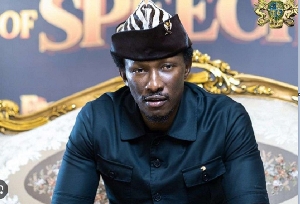Opinions of Monday, 27 April 2020
Columnist: Ethel Nana Esi Abban
Women in indeginous art ought to be acknowledged
As may be known by lovers, art comes in many forms and usually categorized into two, thus tangible and intangible. Intangible arts including poems, music and even care with tangible including basketry, pottery making, and painting among others.
Women are often not given credit for their fine work of art in everyday life and even in the art industry. For years, people have asked where women are in art because it seems like men are considered as the only and best cradle of art.
In Wendy Slatkin’s ‘Women Artists in History,’ she stated that “in the absence of concrete evidence, it is very difficult to determine the extent of women’s participants in craft activity.
We simply do not know whether women were responsible for the creation of the fertility figurines, clay pots or woven baskets.
However, we can assume that women were responsible for the creation of cloth”.
Similarly, In Adeola James’ introduction of “our problem” written in 1990, she said that “is that we have listened rarely to women’s voices, the noises of men having drowned us not in every sphere of life, including arts.
Yet women too are artists, and are endowed with special sensitivity and compassion, necessary to creativity.
Women are known to be a key contributor in society’s development since they assume the roles of a cook, mother, wife, house keeper and nurse.
In fashion and entertainment, women are recognized for their creativity in cloth and dress making and for their involvement in music and dance, hence the need to give the needed credit women deserves for their generational hard work.
It is important to know that the soft nature of most women thus, love, care and compassion is art as it brings families together and helps settles disputes.
Not to wander away from the main deal, there is historical evidence of women who have worked hard in the field of art.
In Ghana for instance, the National Flag was designed by a woman called Theodosia Oko. In North America, history has it that one of the oldest form of art, Basketry, was generally a woman’s job. Women in the Republic of Congo were recognized for the maker’s pots they used for fetching water as their duties were strictly as housewives.
In Ghana, women are very hardworking and attach love to almost everything they do including their involvement in the production and decoration of fabrics, leather, clay, metal and wood products. Alongside this, they work as wives, mothers, housekeepers, nurses and musicians (singing lullabies, songs in stories).
So why can women not be considered as great artists and given the attention they deserve.
From research conducted by Eric Appau Asante, Kpando women of the Volta Region are known for their pottery making, Sirigu women for their mural paintings, Ga women for their skills in business by including music.












